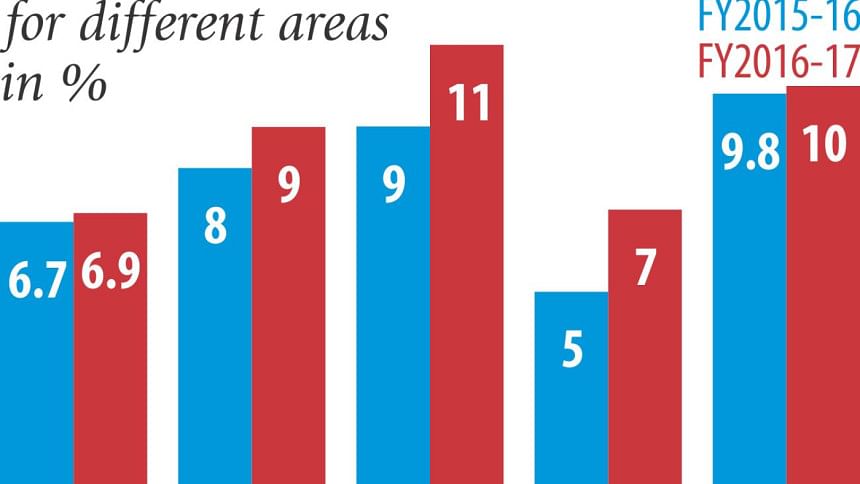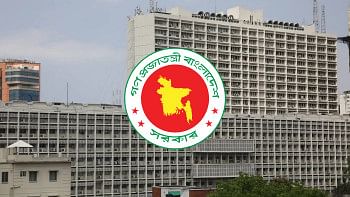ADB keeps growth forecast unchanged at 6.7pc this year

The Asian Development Bank has kept its growth forecasts for Bangladesh unchanged at 6.7 percent for the current fiscal year, though the country's main economic indicators are now better than a year earlier.
The forecast sits between the World Bank's projection of 6.5 percent and the government's 7 percent.
Earlier in September last year, the Manila-based multilateral lender tipped Bangladesh's gross domestic product to grow at 6.7 percent in fiscal 2015-16.
The lender acknowledged that all major economic indicators have been showing signs of improvement in the current fiscal year, according to Asian Development Outlook 2016: Asia's Potential Growth, the ADB's flagship annual publication.
Bangladesh recorded GDP growth of 6.6 percent last fiscal year, despite a skid in the third quarter due to violent political activities and subdued private investment.
“Global headwinds notwithstanding, growth is expected to edge up in the next two years on steady expansion in garment exports,” the ADB said in the report.
It said Bangladesh's growth will rise to 6.9 percent next fiscal year.
The goal of graduating from low- to middle-income status will require higher investment and thorough reform to improve the business environment, it said.
ADB Country Director Kazuhiko Higuchi, at the launch of the report in Bangladesh yesterday, said fiscal 2015-16's growth will be driven by garment exports and resilient domestic consumption.
An enabling business environment ensuring stability, proactive policy support, reforms and improved regulatory environment are important for stimulating investment and higher GDP growth.
Implementing the new VAT law and improving the banking system and administration are also important for Bangladesh, he added. Garment, which accounts for around 80 percent of the country's exports, increased 9.5 percent year-on-year in the first eight months of fiscal 2015-16.
Bangladesh's overall export is expected to increase 8 percent this fiscal year, up significantly from 3.3 percent a year earlier, according to the report. Imports are projected to grow 9 percent. Remittance, which dropped 1.5 percent in the first eight months, is tipped to increase 5 percent.
On the concerns about a decline in remittance from Malaysia, Mohammed Parvez Imdad, principal country specialist of the ADB's Bangladesh office, said it will be offset by the inflow of remittances from the new markets.
Industrial growth will be slightly faster at 9.8 percent against fiscal 2014-15's 9.7 percent, due to better performance by garment exports, manufacturing for the domestic market and expansion of the construction sector.
The services sector is also estimated to grow 5.9 percent, which is slightly higher than last fiscal year's 5.8 percent.
The ADB report said agricultural growth is expected to undergo little change, growing at 3.2 percent, down slightly from the previous year's 3.3 percent, due to base effect.
Investment rose only marginally to 28.9 percent of GDP in FY2015 from 28.6 percent the previous year, mostly on increased public investment.
Private investment remained stagnant owing to investor caution, infrastructure and skill shortages, and a weak business environment. Foreign direct investment remains below 1 percent of GDP and 3 percent of total investment.
The average inflation is projected to slow to 6.2 percent this fiscal year, down from 6.4 percent a year earlier, due to declining fuel and commodity prices in the international market and prudent monetary policy.
The central bank's active exchange rate management kept the Bangladesh taka stable against the dollar, depreciating by only 0.2 percent in FY2015.
However, trade partners' greater currency depreciation against the dollar and lower domestic inflation pushed the taka up in real effective terms by 14 percent year-on-year during the fiscal year, indicating some loss of export competitiveness, the report said. The current account deficit is projected to improve slightly to 0.5 percent of GDP this year.
The ADB report said growth in developing Asia will soften to 5.7 percent in 2016 and 2017, down from 5.9 percent last year, mainly because of moderating growth of China.
The ADB projected India's growth at 7.4 percent this year and 7.8 percent next year.

 For all latest news, follow The Daily Star's Google News channel.
For all latest news, follow The Daily Star's Google News channel. 



Comments